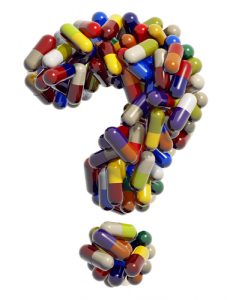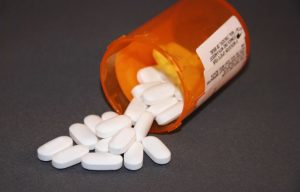Overdose deaths due to drug use are in the rise again. Individuals due to opioids and other drugs especially with Fentanyl are increasing the number drastically. Individuals hence are turning to overdose reversal drugs such as Naloxone to save lives. The life saving reversal is becoming more and more available but its presence and use is only a bandage. It does not remove the source of the issue which is addiction. Substance Abuse and addiction need real solutions that help individuals emotionally overcome drug use and find healthier ways to cope. Addiction and Substance Abuse Counselors can help individuals learn to overcome addiction.

CNN recently wrote an interesting article on the use of Naloxone in the ongoing opioid crisis. The article, “Naloxone is reaching more people than ever” by and , discuss the ongoing increase in deaths due to overdose. They furthermore discuss the role Naloxone plays in reducing those deaths and how it will soon be more accessible to others. Despite this, again, this is seen as a bandage to a greater problem. The article states in regards to better access,
“The US Food and Drug Administration will meet next month to review the first application for a naloxone nasal spray that would be available over-the-counter. The application, which is for a generic version of Narcan from drugmaker Emergent BioSolutions, was granted priority review in December after the FDA signaled that it would support submissions to improve access. Still, experts say that improving access to naloxone is just one step down a long road. Making the medication available over-the-counter will help make it more accessible, but experts say it’s important that it gets to the right people.”
“Naloxone is reaching more people than ever”. and
To read the entire article, please click here
Commentary
In recent years, opioid overdose deaths have become a major public health crisis in the United States. However, there is hope for those living with opioid addiction. Naloxone, a life-saving medication, is proving to be an effective tool in reducing opioid overdose deaths. In this blog, we will discuss what naloxone is, the dangers of opioid overdoses, how naloxone is administered, the legal implications and restrictions on naloxone, availability and access to naloxone, education and awareness of naloxone, the benefits of naloxone, and the cost of naloxone.
While Naloxone is crucial to saving lives, the root problem of substance abuse needs to be addressed as well.
What is Naloxone and How Does it Work?
Naloxone, also known as Narcan, is a drug that is used to reverse the effects of opioid overdoses. It works by blocking the opioid receptors in the brain, thereby reversing the effects of an overdose. Naloxone is an opioid antagonist, meaning it binds to opioid receptors and blocks them, preventing any further action. It is important to note that naloxone does not have any effect on non-opioid drugs such as alcohol, benzodiazepines, or cocaine.
Naloxone is a safe and effective drug with few side effects. It is available in both injectable and nasal spray forms, making it easy to administer. Naloxone can be given by first responders, family members, or friends of someone who is experiencing an opioid overdose. It is important to note that naloxone does not replace medical attention and the person who has received naloxone should seek medical attention as soon as possible.
The Dangers and Statistics of Opioid Overdoses Due to Substance Abuse

Opioid overdoses are a major public health concern in the United States. According to the Centers for Disease Control and Prevention (CDC), more than 130 people in the United States die each day from an opioid substance abuse and overdose. In 2017, more than 47,000 people died from an opioid overdose. The majority of these deaths were due to prescription opioids, such as oxycodone and hydrocodone, and synthetic opioids, such as fentanyl.
Opioid overdose deaths have been on the rise in recent years, due in large part to the increasing availability of illegal opioids, such as heroin and fentanyl. These drugs are often mixed with other substances, making them even more dangerous. The misuse of prescription opioids is also contributing to the increasing number of opioid overdoses.
How Naloxone is Saving Lives
Naloxone has been proven to be an effective tool in reducing opioid overdose deaths. Since its introduction in 1996, naloxone has been used to reverse more than 26,000 opioid overdoses in the United States. In many cases, naloxone has been used to save the lives of those who would have otherwise died due to an opioid overdose.
Naloxone is also increasingly being used to reduce the number of opioid-related fatalities. In some states, laws have been passed that allow first responders to carry and administer naloxone. In addition, many states have passed laws that allow family members and friends of those with opioid addiction to obtain a prescription for naloxone.
How Naloxone is Administered
Naloxone can be administered in a number of ways. Injectable naloxone is the most common form of administration and is typically used by first responders. Injectable naloxone is given through an injection into a muscle, typically in the arm or leg. Naloxone can also be administered through a nasal spray, which is easy to use and does not require any medical training.
In some states, naloxone is available over the counter at pharmacies. This makes it easier for family members and friends of those with opioid addiction to obtain naloxone. It is important to note that, while naloxone can be administered without a prescription, it should only be used with medical supervision.
The Legal Implications and Restrictions on Naloxone
In recent years, many states have passed laws that allow first responders to carry and administer naloxone. These laws provide immunity from criminal and civil liability for those who administer naloxone in good faith. In addition, many states have passed laws that allow family members and friends of those with opioid addiction to obtain a prescription for naloxone.
However, there are still some restrictions on naloxone. In some states, naloxone is only available through a prescription from a doctor. In addition, there are some states that do not allow for naloxone to be prescribed to family members or friends of those with opioid addiction. It is important to check with your state to determine the legal implications and restrictions on naloxone.
Availability and Access to Naloxone
Naloxone is increasingly becoming more available and accessible. In recent years, many states have passed laws that allow first responders to carry and administer naloxone. In addition, many states have passed laws that allow family members and friends of those with opioid addiction to obtain a prescription for naloxone.
In some states, naloxone is available over the counter at pharmacies. This makes it easier for family members and friends of those with opioid addiction to obtain naloxone. In addition, many states have passed laws that allow pharmacists to dispense naloxone without a prescription. It is important to check with your local pharmacy to see if naloxone is available.
Education and Awareness of Naloxone
In order for naloxone to be effective, it is important for people to be educated and aware of its use. This includes understanding the signs and symptoms of an opioid overdose and knowing when and how to administer naloxone. Many states have passed laws that require first responders to be trained in the proper use of naloxone.
In addition, many organizations have started to offer training and education programs for family members and friends of those with opioid addiction. These programs provide information on the signs and symptoms of an opioid overdose, how to administer naloxone, and what to do in the event of an overdose.
The Benefits of Naloxone
Naloxone has numerous benefits. It is a safe and effective drug with few side effects, making it easy to administer. It can be used to reverse the effects of an opioid overdose, potentially saving the life of someone who would otherwise die due to an overdose. It is also increasingly becoming more available and accessible, making it easier for family members and friends of those with opioid addiction to obtain naloxone.
In addition, naloxone can be used to reduce the number of opioid-related fatalities. This can help to reduce the burden on first responders, who are often the first to arrive on the scene of an opioid overdose. Naloxone can also be used to reduce the number of opioid-related hospitalizations, which can help to reduce healthcare costs.
The Cost of Naloxone
The cost of naloxone can vary depending on the form in which it is administered. Injectable naloxone typically costs between $30 and $120 per dose. The nasal spray form of naloxone typically costs between $50 and $150 per dose. In some states, naloxone is available over the counter at pharmacies without a prescription.
In addition, many states have passed laws that allow pharmacists to dispense naloxone without a prescription. This can make it easier for family members and friends of those with opioid addiction to obtain naloxone at a reduced cost.
Conclusion

Naloxone is a safe and effective drug that can be used to reverse the effects of an opioid overdose. It is increasingly becoming more available and accessible, making it easier for family members and friends of those with opioid addiction to obtain naloxone. Naloxone can be used to reduce the number of opioid-related fatalities and hospitalizations, which can help to reduce healthcare costs. It is important to be aware of the signs and symptoms of an opioid overdose and to know when and how to administer naloxone.
The use of naloxone can be lifesaving and can help to reduce the number of opioid overdose deaths. If you or someone you know is at risk of an opioid overdose, it is important to make sure that you are educated and aware of the signs and symptoms of an overdose and to know when and how to administer naloxone.
If you or someone you know is at risk of an opioid overdose, it is important to talk to your doctor about naloxone and to make sure that you have access to it. If you are in a state that has passed laws that allow family members and friends of those with opioid addiction to obtain naloxone without a prescription, it is important to check with your local pharmacy to see if naloxone is available.
Naloxone is a life-saving medication that is proving to be an effective tool in reducing opioid overdose deaths. With the right education and awareness, naloxone can be used to save the lives of those who would have otherwise died due to an opioid overdose.
Despite its amazing ability to save lives, individuals still need to find the root reason for their addiction to a substance. Substance Abuse Counseling can help individuals find better ways to cope with urges and make better decisions for their health and life itself.
AIHCP offers a four year certification in Substance Abuse Practitioner Training for qualified professionals. The program is online and independent study and open to qualified professionals seeking a certification in Substance Abuse Counseling. Those certified can utilize this certification under the guidance and care of an institution, or if already licensed as a counselor, use it to enhance their practice and standard in Substance Abuse guidance and care.
Additional Resources
“What is naloxone?”. January 2022. National Institute of Drug Abuse. Access here
“Naloxone”. Wikipedia. Access here
“How to administer Naloxone”. American Medical Association. Access here
“Opioid overdose prevention and naloxone rescue kits: what we know and what we don’t know”. Todd Kerensky and Alexander Walley. Addiction Science & Clinical Practice volume 12, Article number: 4 (2017). Access here
